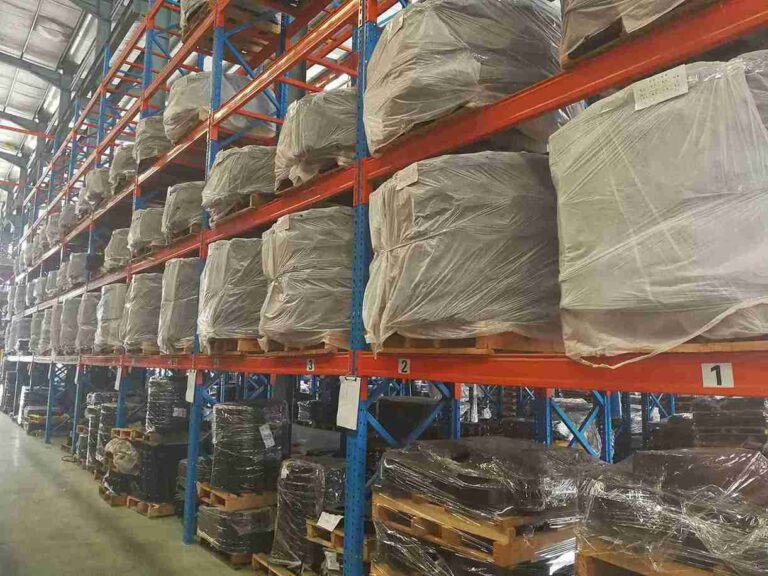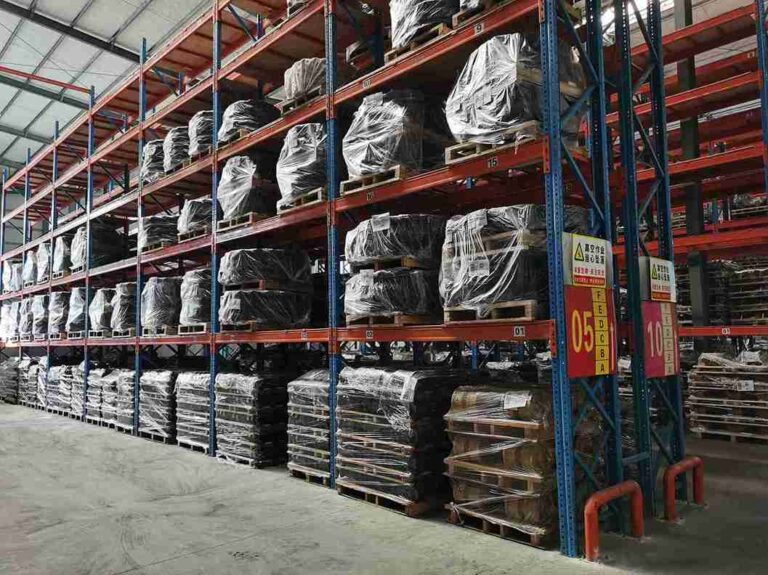📐 "First 50 Enterprise Queries Get Custom 3D Warehouse Design" Plan

Introduction: Why a Beam Racking Maintenance Schedule is Essential
A beam racking maintenance schedule is not just a recommendation—it’s a non-negotiable requirement for any warehouse relying on pallet racking systems. Without a structured beam racking maintenance schedule, facilities risk catastrophic rack failures, OSHA violations, and costly operational downtime.
This guide provides a step-by-step blueprint for creating and implementing a beam racking maintenance schedule that:
✔ Prevents accidents by identifying structural weaknesses early
✔ Ensures OSHA & RMI compliance with documented inspections
✔ Extends rack lifespan, saving thousands in replacement costs
✔ Boosts warehouse efficiency by minimizing unplanned disruptions
By the end, warehouse managers, safety officers, and logistics professionals will have a proven framework for maintaining beam racking systems at peak performance.

The High Cost of Ignoring a Beam Racking Maintenance Schedule
1. Rack Collapses Lead to Injuries & Fatalities
The most severe consequence of neglecting a beam racking maintenance schedule is a sudden rack collapse. According to OSHA, warehouse rack failures cause:
- Worker injuries from falling beams and pallets
- Fatalities in extreme cases where racks topple entirely
- Multi-million dollar lawsuits from negligence claims
A proactive beam racking maintenance schedule could have prevented 90% of these incidents.
2. Unplanned Downtime Disrupts Operations
When a pallet rack fails, warehouses face:
- 24-72 hours of halted operations for emergency repairs
- Lost productivity as workers wait for clearance
- Expedited replacement costs for damaged components
A proper beam racking maintenance schedule eliminates these risks by catching issues before they escalate.
3. OSHA Fines & Legal Consequences
OSHA explicitly requires warehouses to:
- Inspect racks regularly (per ANSI MH16.1-2023)
- Document all maintenance actions
- Train staff on rack safety protocols
Without a formal beam racking maintenance schedule, facilities risk $15,000+ per violation in fines.
How to Create a Beam Racking Maintenance Schedule in 5 Steps
Step 1: Conduct a Full Rack System Assessment
Before drafting a beam racking maintenance schedule, warehouses must evaluate current conditions.
Critical Inspection Points:
✅ Uprights & Baseplates – Check for bending, cracks, or misalignment
✅ Beams & Connectors – Look for deformation, missing clips, or loose bolts
✅ Floor Anchors – Ensure they’re secure and corrosion-free
✅ Load Capacity Labels – Verify visibility and accuracy
Tools Required for Inspections:
- Torque wrench (for bolt tightening)
- Laser level (for alignment verification)
- Ultrasonic thickness gauge (detects hidden corrosion)
Step 2: Define Inspection Frequency Based on Risk
A well-structured beam racking maintenance schedule follows RMI-recommended intervals:
- Daily Checks – Quick visual scans by forklift operators
- Weekly Walkthroughs – Supervisor-led inspections
- Quarterly Formal Audits – Detailed structural reviews
- Annual Professional Evaluations – Third-party safety assessments
Step 3: Assign Clear Maintenance Responsibilities
A beam racking maintenance schedule only works if roles are defined:
- Warehouse Managers – Oversee the entire maintenance program
- Forklift Operators – Report impact damage immediately
- Safety Officers – Enforce corrective actions
- Third-Party Inspectors – Conduct in-depth structural reviews
Step 4: Implement a Digital Tracking System
Paper logs get lost. A digital beam racking maintenance schedule ensures:
✔ Real-time issue reporting via mobile apps
✔ Automated reminders for upcoming inspections
✔ Cloud-based records for OSHA compliance
Step 5: Continuously Improve the Maintenance Plan
A beam racking maintenance schedule should evolve based on:
- New OSHA regulations
- Changes in warehouse layout
- Advances in rack protection technology
Key Components of a Beam Racking Maintenance Checklist
1. Structural Integrity Verification
- Are uprights plumb and undamaged?
- Are beams seated correctly with no deformation?
- Are bolts tightened to manufacturer specs?
2. Load Capacity Compliance
- Are weight limits clearly displayed?
- Are beams overloaded or unevenly loaded?
3. Forklift Impact Prevention
- Are there dents, bends, or cracks from collisions?
- Are column guards installed in high-risk zones?
4. Environmental Damage Control
- Is corrosion present in humid climates?
- Are racks exposed to corrosive chemicals?
Common Beam Racking Issues & How to Fix Them
1. Bent or Twisted Uprights
Solution: Replace immediately—never attempt to straighten damaged uprights.
2. Loose or Missing Beam Connectors
Solution: Tighten bolts to specified torque settings and replace missing clips.
3. Overloaded Beams
Solution: Redistribute weight or upgrade to higher-capacity beams.
4. Forklift Impact Damage
Solution: Install impact guards and retrain operators on safe maneuvering.
Best Practices for Optimizing a Beam Racking Maintenance Schedule
1. Train Staff on Rack Safety Protocols
- Never exceed load limits
- Avoid dragging pallets across beams
2. Use Technology for Smarter Inspections
- RFID tags for tracking rack conditions
- AI-powered damage detection via warehouse cameras
3. Schedule Professional Inspections Annually
Even with in-house checks, a third-party audit ensures no hidden risks.
Conclusion: A Beam Racking Maintenance Schedule Saves Lives & Money
A beam racking maintenance schedule is the backbone of warehouse safety. By following this guide, facilities can:
✔ Prevent accidents with proactive inspections
✔ Avoid OSHA fines through proper documentation
✔ Extend rack lifespan, reducing replacement costs
Start today—audit your racks, assign responsibilities, and implement a foolproof beam racking maintenance schedule.
FAQs About Beam Racking Maintenance Schedules
1. How often should a beam racking maintenance schedule be updated?
At least annually, or whenever warehouse layouts or regulations change.
2. Can damaged beams be repaired, or must they be replaced?
Beams with deformations must be replaced—repairs compromise structural integrity.
3. What’s the #1 mistake in beam racking maintenance?
Skipping inspections—most failures result from undetected damage.
4. Do small warehouses need a beam racking maintenance schedule?
Yes—any facility using pallet racks must follow OSHA inspection guidelines.
5. How can technology improve a beam racking maintenance schedule?
Digital logs, impact sensors, and AI analytics make inspections faster and more accurate.




